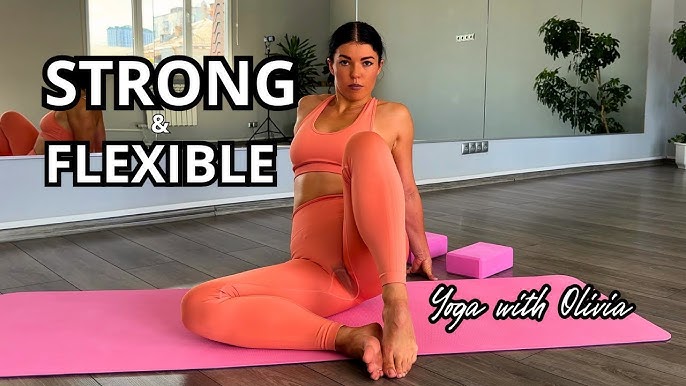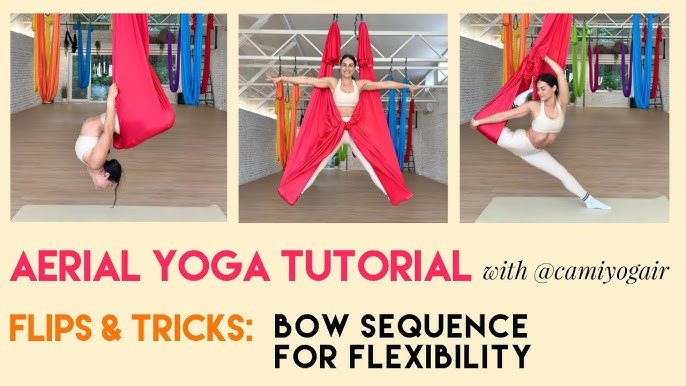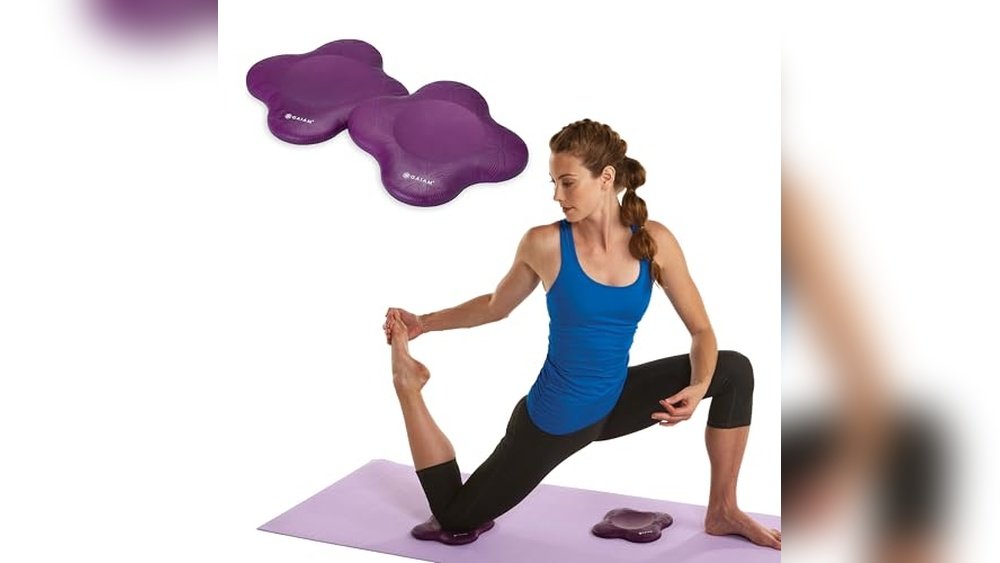Are you ready to try something new that can boost your strength, flexibility, and relaxation all at once? Yoga trapeze exercises offer a fun and effective way to stretch your body while gently suspending yourself in the air.
If you’ve never used a yoga trapeze before, don’t worry—this guide is made just for you. You’ll learn simple moves designed to build confidence and help you feel more comfortable as you explore this unique form of aerial yoga. Keep reading to discover how easy and rewarding yoga trapeze can be for beginners like you!
Benefits Of Yoga Trapeze
Yoga trapeze offers many benefits for beginners. It supports gentle movements and helps build strength. Using the trapeze allows you to explore new poses safely. This practice improves overall body health and well-being. Below are some key benefits you can enjoy.
Full-body Strength And Flexibility
The yoga trapeze works many muscles at once. It helps tone arms, shoulders, core, and legs. Hanging and holding poses build muscle strength steadily. Stretching with the trapeze improves flexibility over time. This makes daily movements easier and reduces injury risk.
Spinal Decompression And Posture
Yoga trapeze allows gentle spinal lengthening. Hanging upside down or supported helps relieve back pressure. This eases tension in the spine and muscles. It can improve posture by aligning the back correctly. Better posture reduces pain and boosts confidence.
Improved Circulation And Relaxation
The trapeze increases blood flow through body movement. Better circulation supports healing and energy levels. Suspended poses promote deep relaxation and calm the mind. This reduces stress and improves sleep quality. Relaxation also helps muscles recover after exercise.
Essential Yoga Trapeze Equipment
Using the right equipment is key for safe and effective yoga trapeze practice. Beginners need sturdy and comfortable gear to support their weight. Choosing quality items helps prevent injuries and builds confidence. This section covers essential yoga trapeze equipment to get started well.
Choosing The Right Trapeze Setup
Select a trapeze with strong, durable fabric. Look for high-quality nylon or polyester for extra support. The trapeze should include padded handles and foot loops for comfort. Check the weight limit to match your body safely. Consider a model that is easy to adjust for different heights and poses.
Safety Features To Look For
Find trapeze equipment with secure locking carabiners and heavy-duty straps. These parts keep the trapeze firmly in place. The fabric must be tear-resistant and able to hold your weight without stretching. Look for setups that come with clear instructions and safety certifications. Safety features reduce risks and boost your practice.
Installation Tips For Beginners
Install the trapeze in a strong, stable place like a ceiling beam or door frame. Use a stud finder to locate solid support in walls or ceilings. Follow the manufacturer’s instructions carefully for mounting hardware. Test the trapeze with light pressure before full use. Keep the area clear of obstacles to avoid accidents.
Basic Yoga Trapeze Poses
Basic Yoga Trapeze poses offer a gentle introduction to aerial yoga. They help build confidence and strength while supporting the body. These poses use the trapeze hammock to improve balance and flexibility. Beginners can explore different movements safely and comfortably. Practicing these basic poses regularly enhances body awareness and relaxation.
Supported Inversions
Supported inversions allow beginners to hang upside down with support. The trapeze holds the body weight, reducing pressure on the neck and spine. This pose helps improve circulation and relieves tension in the back. Start with simple inversions like the supported shoulder stand or hanging child’s pose. These poses build trust in the trapeze and prepare the body for more advanced moves.
Core Strengthening Exercises
The trapeze hammock engages the core muscles deeply. Basic core exercises include seated holds and leg lifts while gripping the trapeze. These movements strengthen the abdomen and lower back. Core strength improves balance and stability in all yoga poses. Begin with short sets and focus on controlled breathing. This approach prevents strain and builds endurance gradually.
Gentle Stretches And Extensions
Gentle stretches use the trapeze to lengthen muscles safely. The hammock supports the body during backbends and side stretches. These extensions open the chest and shoulders, reducing stiffness. Simple poses like supported forward folds and side stretches relax tight muscles. Use slow movements and hold each stretch for several breaths. This practice increases flexibility and calms the mind.
Preparing Your Body
Preparing your body is a key step before starting yoga trapeze exercises. It helps prevent injuries and improves your practice. Your muscles and joints need to be ready for the movements and stretches ahead.
This preparation also helps your mind focus and relax. It sets a strong foundation for your yoga trapeze journey. A proper warm-up and breath control can make your practice safer and more enjoyable.
Warm-up Routines
Start with gentle movements to increase blood flow. Neck rolls, shoulder shrugs, and wrist circles are good choices. These help loosen tight areas and prepare your joints.
Next, try some light stretches. Focus on your back, hips, and legs. These areas work hard during yoga trapeze exercises. Warming up slowly reduces muscle stiffness and lowers injury risk.
Breath Control Techniques
Breath control, or pranayama, is vital in yoga. It calms your mind and supports your movements. Begin by inhaling deeply through your nose. Then exhale slowly and fully.
Practice steady, even breaths while holding poses. This helps you stay balanced and relaxed. Breath control also improves oxygen flow to your muscles. It keeps you energized during your practice.
Building Foundational Strength
Strength in your core, arms, and shoulders is important. These muscles support your body during trapeze exercises. Start with simple exercises like planks and wall push-ups.
Use your body weight to build endurance. Gradually increase the time you hold each pose. Strong foundations reduce strain and make movements easier. Consistency in strength training improves your yoga trapeze skills over time.
Safety Tips For Beginners
Starting yoga trapeze exercises can be exciting and rewarding. Safety is very important for beginners. Taking care to avoid injuries helps you enjoy your practice more. This section shares key safety tips for beginners. Following these tips creates a safe and pleasant experience.
Avoiding Common Injuries
Use the trapeze in a clear, open space. Check the equipment for wear before each use. Warm up your body with gentle stretches first. Move slowly and avoid sudden motions. Never push beyond your comfort level. Stop if you feel pain or sharp discomfort. Injuries often happen from rushing or ignoring pain signals.
Proper Use Of Handles And Straps
Hold the handles firmly but without tension. Adjust straps to fit your height and body shape. Make sure the straps are locked securely. Use straps only as instructed in your routine. Keep hands dry to avoid slipping. Regularly inspect straps and handles for damage. Using the trapeze correctly prevents falls and strain.
Listening To Your Body
Pay attention to your breathing and muscle feelings. Take breaks if you feel tired or dizzy. Respect your limits and progress step by step. Rest if you feel soreness or discomfort after practice. Yoga trapeze builds strength gradually with consistent care. Your body’s signals guide you to practice safely and effectively.

Credit: www.youtube.com
Creating A Beginner Routine
Creating a beginner routine for yoga trapeze exercises sets a strong foundation. This routine helps build confidence and prevents injuries. It guides your body to adapt safely to new movements. A well-planned routine balances effort and rest, making your practice enjoyable. Focus on small steps and steady progress for lasting benefits.
Starting Slow And Progressing
Begin with simple poses that feel comfortable. Spend time learning how to hold the trapeze correctly. Practice basic stretches and gentle swings first. Increase difficulty gradually as strength and flexibility improve. Avoid rushing into advanced moves to prevent strain. Progress at your own pace and listen to your body.
Balancing Strength And Flexibility
Your routine should include exercises for both strength and flexibility. Strength training builds muscle control for safe trapeze use. Flexibility exercises improve your range of motion and reduce tightness. Alternate between these types of exercises during your sessions. This balance helps you perform poses smoothly and safely. It also supports overall body health and posture.
Incorporating Rest And Recovery
Rest days are crucial for muscle repair and growth. Schedule breaks between sessions to avoid overuse injuries. Use rest time for gentle stretching or meditation. Pay attention to any soreness or fatigue. Adjust your routine to include more recovery if needed. Proper rest keeps your practice sustainable and enjoyable.
Common Challenges And Solutions
Yoga trapeze exercises offer a unique way to improve strength and flexibility. Beginners often face some challenges. Recognizing these common hurdles helps create a safer and more enjoyable practice. Here are typical difficulties and ways to address them.
Overcoming Fear Of Inversions
Inversions can feel scary at first. Hanging upside down may cause discomfort or dizziness. Start by practicing gentle holds near the ground. Use the trapeze for support and move slowly. Focus on your breath to stay calm. Gradually increase time spent in inversions. Trust your body and avoid rushing.
Improving Grip And Stability
Holding onto the trapeze can be hard for beginners. Weak grip limits control and confidence. Use chalk or grip gloves to reduce slipping. Practice hanging and small swings to build hand strength. Engage your core muscles to improve balance. Try shorter sessions often to enhance endurance.
Modifying Poses For Comfort
Some poses may cause strain or discomfort. Adjust the trapeze height to suit your body. Use cushions or blankets under sensitive areas for support. Avoid forcing yourself into deep stretches. Listen to your body’s signals and rest if needed. Modifications keep you safe and help progress steadily.

Credit: www.youtube.com
Finding Guidance And Support
Starting Yoga Trapeze exercises can feel challenging without proper guidance. Support helps build confidence and improves safety. Finding the right instruction makes learning easier and more enjoyable.
Many resources exist to help beginners learn Yoga Trapeze. Choosing the best fit depends on your preferences and availability. Explore options that offer clear directions and a supportive environment.
Online Tutorials And Classes
Online tutorials offer flexible learning from home. Videos break down poses step-by-step with clear instructions. Beginners can pause and repeat moves at their own pace.
Many platforms provide free and paid classes. Some feature expert instructors who explain safety tips. Watching different teachers helps find a teaching style that suits you.
Local Studios And Instructors
Local studios provide hands-on guidance and personal feedback. Instructors can adjust your form to prevent injuries. Group classes also create a motivating atmosphere.
Visiting a studio allows you to try the trapeze equipment safely. You meet other beginners and share experiences. This support builds confidence and encourages regular practice.
Community Groups And Forums
Community groups connect you with fellow Yoga Trapeze enthusiasts. Forums offer advice, answer questions, and share tips. They create a space for encouragement and learning.
Joining social media groups or local meetups can boost motivation. You learn from others’ successes and challenges. This interaction helps maintain commitment and enjoy the journey.

Credit: www.youtube.com
Frequently Asked Questions
Is Yoga Trapeze A Good Workout?
Yoga trapeze offers a full-body workout by engaging arms, core, back, and legs. It improves strength, flexibility, and spinal decompression. This dynamic aerial practice enhances muscle tone and balance, making it an effective and enjoyable fitness routine for all levels.
Which Is The Easiest Yoga For Beginners?
Hatha yoga is the easiest for beginners. It focuses on slow, basic poses, proper alignment, and breath control. Chair and Restorative yoga also suit beginners by providing gentle, supported movements. These styles help build strength, flexibility, and relaxation without overwhelming new practitioners.
What Is Trapeze Yoga?
Trapeze yoga uses a hammock to perform aerial yoga poses, inversions, and strength exercises. It enhances flexibility, strength, and spinal decompression.
How Far Apart Should I Hang A Yoga Trapeze?
Hang a yoga trapeze about 4 to 5 feet apart for proper support and safe movement. Ensure the spacing matches your height and exercise space.
Conclusion
Yoga trapeze exercises offer a fun and gentle way to build strength. Beginners can enjoy improved flexibility and better body balance. Using the trapeze supports safe practice and helps reduce strain. Start slowly and listen to your body during each session.
Consistent practice brings gradual progress and greater confidence. Remember, patience makes the journey enjoyable and effective. Keep exploring different poses to find what feels best. Yoga trapeze can be a helpful addition to your fitness routine. Embrace the experience and enjoy the benefits it brings.



